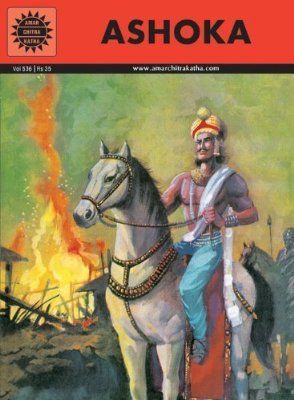

Thus, the storyboard form in which ACK adapted the various tales, legends and dramas played upon great individuals as role models, according to the established pedagogical tradition of children’s literature in India, as much as the hagiographical model prevalent in pre-modern and early modern contexts to describe the lives of saints.

Even as they collected stories from ancient sources, ACK authors deployed the individual biography mode. Hindu myths, legends and classical Sanskrit texts were thus mined for evidence of a great and superior culture.

The emphasis in ACK however was on the retrieval and presentation of the glorious heritage of India, usually taken to stand in for ancient India. The comics were modelled on the British and American Classics Illustrated series, which mostly adapted works of fiction into comics, with a preference for the adventure tale and the exotic. Limited, as an attempt to correct the colonial bias of children’s literature in India.

What was the conceivable framework in which overtly sexualized women were allowed to be role models in ACK? How is this identification with beauty squared with alternative ideals of the glorious Hindu/Vedic woman as free and independent? How did ACK negotiate the free sexuality of the ancient heroine to produce a normative national narrative of Hindu women as free in a larger spiritual and social sense? How did it read and adapt the ancient story of the Mahabharata along with the Kalidasa play to address its largely middle class urban child audience? How did the glorified pre-modern romance between Shakuntala and Dushyant framed within a predatory male sexual gaze come to acquire such a deep resonance within a modern Indian romantic imaginary? Top of pageġ Amar Chitra Katha ( ACK, literally ‘the Immortal Illustrated Stories’) comics were started by Anant Pai in 1967, under the aegis of India Book House Pvt. Most of the female heroines in ACK, invariably components of a mythological/legendary universe, are marked by their feminine allure and beauty. This article attempts to understand the pedagogical implications of Shakuntala as a female role model indicated by the prominence given to her character in the comic book series Amar Chitra Katha ( ACK).


 0 kommentar(er)
0 kommentar(er)
